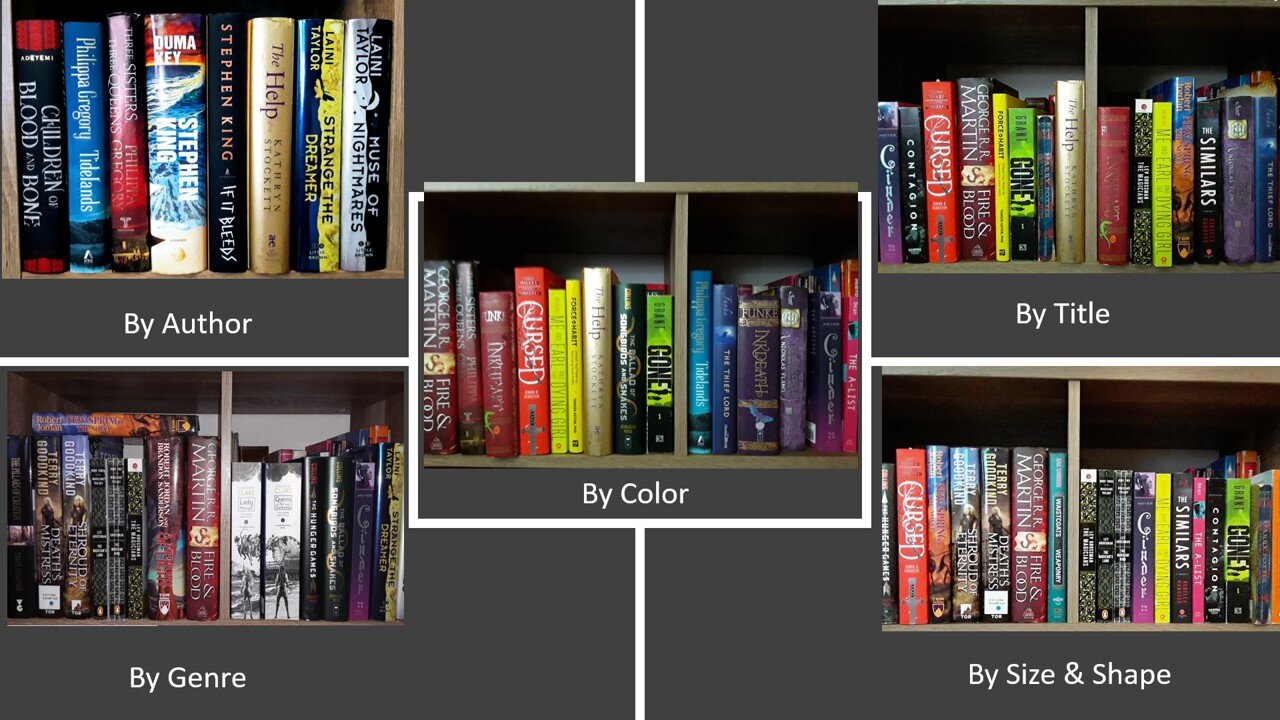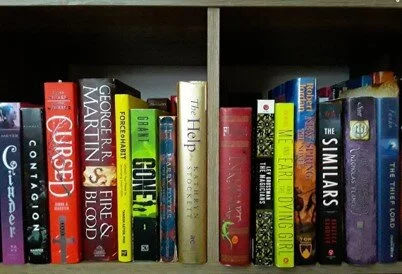How to Organize Your Bookshelves
Organizing your bookshelves can sometimes be an overwhelming project. You may only have a few books, or you may have way too many and don’t know what to do with them all. Depending on the size and shape of your bookshelves, the different ways that you can organize your books are endless. Do you want your books to be easy to locate? Or do you just want your bookshelves to look pretty? Even “looking pretty” can mean different things to different people. If you are feeling stuck, here are just a few ways that you can organize your bookshelves:
Alphabetical Order - By Title
The simplest and most easy way to organize your books is by alphabetical order. Just like in your elementary school library, alphabetical order can be a great way to easily organize your books. Then, whenever you’re looking for a book, you should be able to easily find whatever you’re looking for. If you have a lot of books that are different shapes and sizes, this type of organizing can give a great asymmetrical aesthetic look to your bookshelves. The only con would be that as you collect more and more books, you may be forced to constantly re-organize your shelves to make room for new books. In other words, if you get a new book that starts with “C”, then all other books will need to be shifted to make room for that new book. If you have a large collection, this could become cumbersome. If you are someone who likes to consistently reorganize your bookshelves, then this might actually be a great exercise for you to do.
Example: Cinder - The Thief Lord
Alphabetical Order - By Author
Once you’ve read a book that you really like, you may start to collect other books written by the same author. If you’re like me, you may try and hunt down everything that a particular author has ever written. Once you have a nice collection of multiple books by multiple authors, you may choose to organize your books by Author. Typically, this means organizing your books alphabetically, by the last name of the author. For example, anything written by Stephen King, would come before anything written by J.K. Rowling. This is a great way to organize your books and feature your favorite authors. There can be a sense of pride and/or accomplishment once you’ve collected everything from a particular author. It will be easy to find a book on your shelf if you know who the author was. The only con here is that authors can sometimes write books of different genres, and all different shapes and sizes so if you are a visual person, this type of organization may not be as aesthetically pleasing.
Example: Tomi Adeyemi - Laini Taylor
By Genre
If you are an avid reader like myself, then chances are you do actually read different types of book. Of course you will always have your favorite genre (ex. mine is young adult fantasy), but you may occasionally read other genres like fiction or romance. By grouping together books by genre, this can give a really nice aesthetic to a particular room. For example, maybe you have a single bookshelf in your bedroom, and you fill it with your favorite Harry Potter and other YA Fantasy books. Maybe you have a family room or den that has a bookshelf in a dark corner and you fill if with Stephen King and other thrillers. Maybe you have a bookshelf near your extra comfy couch and want to fill it with romance novels. Whatever your choice, organizing books in this way is a great way to put your person touch in a particular room or space. The only con would be again, if you are a visual person, having books of all different sizes and shapes may not be as visually pleasing to you, and you will need to remember what books you put where.
Example: Adult Fantasy on the left, YA Fantasy on the right
By Shape & Size
If you are a visual person, then organizing your books by size and shape may be the best option for you. In general, this usually involves grouping your books by Hardcover, and then by Paperback. Organizing your books this way can give your bookshelves a more uniform look. You can actually use this organization technique in conjunction with one of the others. In order words, you can group all your hardcovers together and then arrange them alphabetically. Or, you can group all your small softcover together and then group them by genre. There are a lot more options to mix and match when using this type of organizing. The only issue you may run into is that you may have to separate books by the same author. If you need to find a book in your shelves, you will need to remember if it was a hardcover or softcover in order to find it. This might sound like not a big deal if you don’t have that many books, but as your collection starts to grow you might be surprised to find how easy it is to lose a book in your shelves.
Example: Hardcovers on left, softcovers on right
By Color
Finally, you may choose to organize your books by color. This is something that become popular a few years ago, with people arranging their books by the colors of the rainbow (red, orange, yellow, etc.). If you are not a visual person, then it probably doesn’t matter much to you how your books look on your shelves. If you are a visual person, then organizing your books by color is the best way to make an aesthetically pleasing bookshelf for your space. You can put specific colors in specific rooms, or you can turn your books into a rainbow. The more books you have, the more possible color combinations you have available to you. The color possibilities are endless, and creating a rainbow bookshelf can be absolutely beautiful. The only con here is that it will get increasingly difficult to rearrange your books, and keep the same aesthetic, if you are continuously adding books to your collection. If you have a lot of books, you will need to remember what color it was to figure out where you put it in the rainbow. Depending on your needs, this may not be the best option, even though it may be the most colorful.
Example: a simple red through pink
These are just a few different ways that you can organize your bookshelves. If you’re like me, you might even consider using a couple different combinations of styles - by author, genre, size and shape. At the end of the day, you need to decide what is most important to you and your book collection. Is the way that the books look on your shelf most important? Or is it more important to be able to quickly and easily find your favorite books? You should also consider how many new books you may be getting in the future, so that you can plan for space and eliminate the need to constantly reorganize (unless that’s your thing). For me, my goal is just to fit as many books on my shelves as possible. This becomes increasingly difficult as my book collection grows, so I’m always looking for new ways to reorganize, and make the best use of my space.
How do you organize your bookshelves? Come follow Kris Reviews on Facebook, Instagram, or Pinterest and let me know which method you use, or if you do something completely different.





